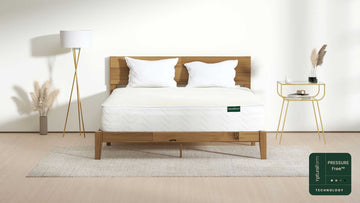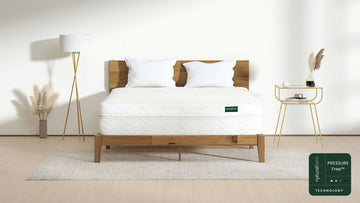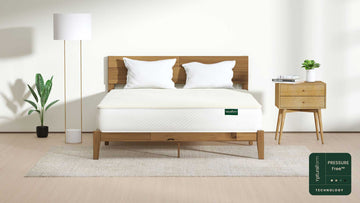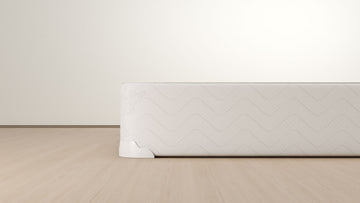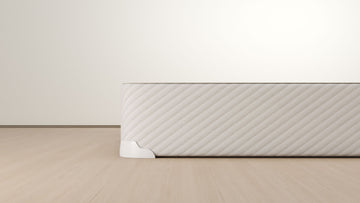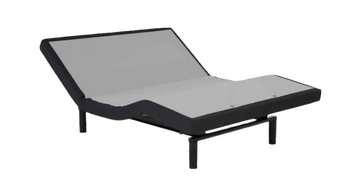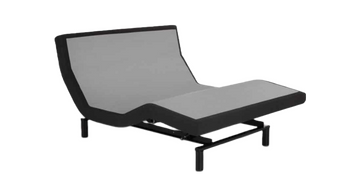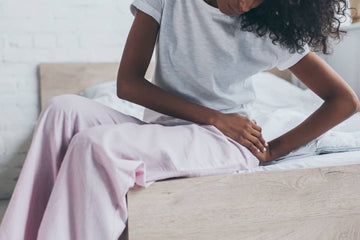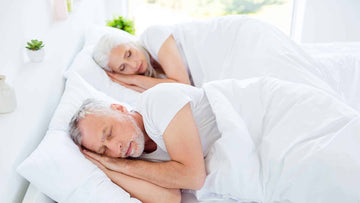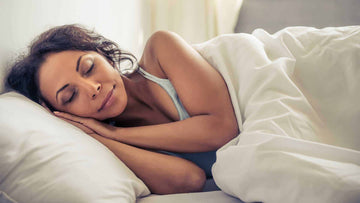Hip pain
Understanding Hip Burstis
Other hip pain causes may include:
When to see a doctor
You may not need to see a doctor if your hip pain is minor. Try these self-care tips:
- Rest – Avoid repeated bending at the hip and direct pressure on the hip. Try not to sleep on the affected side and avoid prolonged sitting.
- Pain relievers – Over-the-counter pain relievers such as acetaminophen (Tylenol, others), ibuprofen (Advil, Motrin IB, others) and naproxen sodium (Aleve) may help ease your hip pain.
- Ice or heat – Use ice cubes or a bag of frozen vegetables wrapped in a towel to apply cold treatments to your hip. Conversely, a warm bath or shower may help prepare your muscles for stretching exercises that can reduce pain.
If self-care treatments don’t help, make an appointment with your doctor.
How your mattress can help with Hip Pain
Sleeping positions are important in reducing bursae inflammation. If your mattress places pressure on affected joints, it limits circulation and increases swelling. A mattress that relieves pressure points and evenly distributes weight becomes necessary not just to feeling rested, but to overall quality of life.
When you lie down, the heaviest parts of your body exert the most pressure on your mattress. Conventional mattresses allow those parts of the body to sink, springs push back against skin, and foam creates an indentation that restricts air flow.
If you’re a side sleeper, one hip and shoulder press into the mattress. Your top knee slopes toward the bed, pulling your spine out of alignment. Because your hips and shoulders are heavier than the rest of your body, your head and feet may rest higher.
During the night, pressure builds where your body experiences it most and you eventually turn over to relieve pain. In addition, your lower back slumps down into the mattress below the ribcage, creating additional pressure on your hips.
If you sleep on your back, your hips and shoulders still sink. Your lower back and behind your knees sag, preventing your hips from staying in the correct position. In the morning when you wake up, joints, tendons and bursae that were already irritated are even worse.
What is the best type of mattress for hip pain?
Air mattress
Open spring mattress
Pocket spring mattress
Memory foam mattress
Latex mattress
Faqs
Can a bad mattress cause hip pain?
If your mattress places pressure on affected joints, it limits circulation and increases swelling. A mattress that relieves pressure points and evenly distributes weight becomes necessary not just too feeling rested, but to overall quality of life.
What does burstis in the hip feel like?
Hip Burstis symptoms include joint pain, tenderness and possible aches. You may also see swelling and feel warmth around the affected area. The pain is often sharp in the first few days. It may be dull and achy later.
The does my hip hurt in bed?
Common hip pain causes may include:
- Arthritis – Osteoarthritis and rheumatoid arthritis are among the most common causes of hip pain, especially in older adults. Arthritis leads to inflammation of the hip joint and the breakdown of the cartilage that cushions your hip bones. The pain gradually gets worse. People with arthritis also feel stiffness and have reduced range of motion in the hip.
- Hip Fractures – With age, the bones can become weak and brittle. Weakened bones are more likely to break during a fall.
- Tendinitis – Tendons are the thick bands of tissue that attach bones to muscles. Tendinitis is inflammation or irritation of the tendons. It’s usually caused by repetitive stress from overuse.
- Muscle or Tendon Strain – Repeated activities can put strain on the muscles, tendons, and ligaments that support the hips. When they become inflamed due to overuse, they can cause pain and prevent the hip from working normally.
- Hip Labral Tear – This is a rip in the ring of cartilage (called the labrum) that follows the outside rim of the socket of your hip joint. Along with cushioning your hip joint, your labrum acts like a rubber seal or gasket to help hold the ball at the top of your thighbone securely within your hip socket. Athletes and people who perform repetitive twisting movements are at higher risk of developing this problem.
